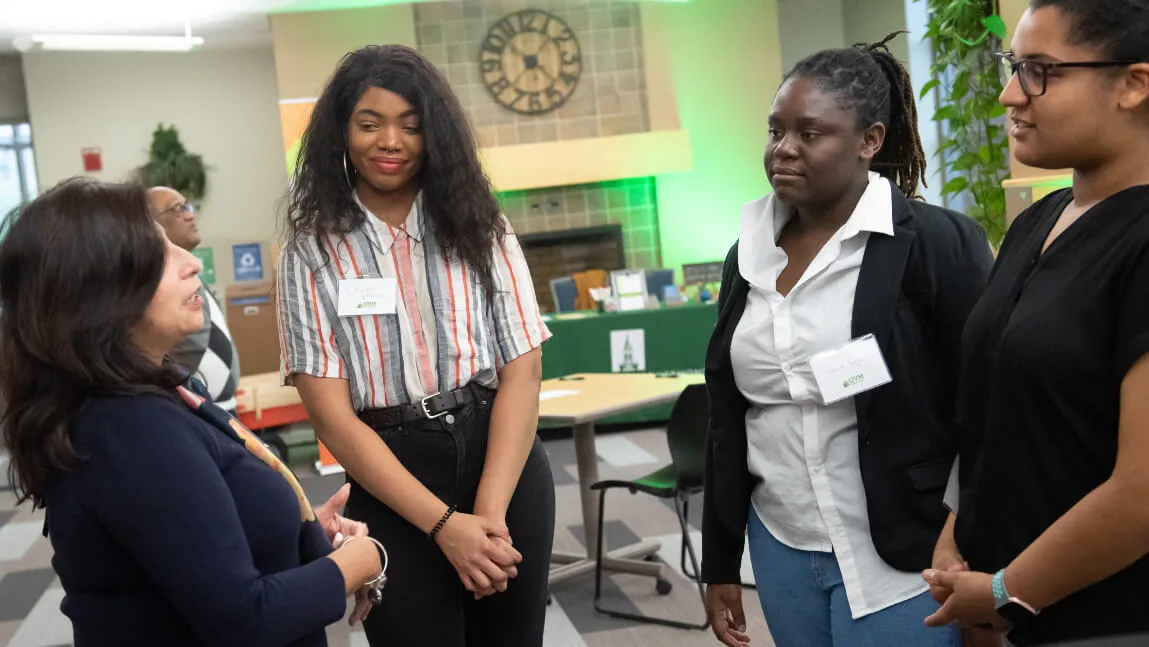Vermont is one of the oldest and whitest states in the country. Recent Census data show that only Maine has less racial diversity. Only Maine, Florida and West Virginia have a higher percentage of residents aged 65 or older. This is a challenging demographic backdrop for Vermonters working to develop a growing and sustainable economy that also rewards those who suffered most from the COVID-19 pandemic, including Vermont’s BIPOC residents.
One way the Office of Engagement (OoE) is working to provide solutions is developing research questions that can show how attitudes in the state are shifting over time. OoE has contracted with UVM’s Center for Rural Studies to poll Vermonters about how far the state’s welcome mat extends to newcomers and quantifies effects of the COVID-19 pandemic.
In answer to the question “How important is it to you that Vermont prioritize attracting new arrivals to live and work in the state?” there was little difference in responses between 2021 and 2022. But when asked how important it is for Vermont to prioritize policies and programs addressing racial inequality in the state, 72% respondents this year said that it was “very important” or “somewhat important” as compared to 53% in 2021.
“It may be that Vermonters are starting to connect attraction of new arrivals—a necessary driver for economic growth—with the importance of creating spaces where people of color are welcomed,” said Emma Spett, research assistant in the OoE and PhD student in sustainable development in policy, economics and governance.
According to Office of Engagement Director Chris Koliba, the question of racial equity in Vermont and its relationship to economic growth came up repeatedly when the office conducted roundtable discussions across the state in the winter of 2020-21. Over 70 leaders from all over the state participated in the discussions, representing a diverse set of interests including workforce development, finance, the arts, government, education and social services.
“In several sessions people noted that while Vermont is often described as a progressive place, the persistence of systemic racism and anti-immigrant sentiments leads to a depleted and increasingly insulated workforce,” Koliba said. “To put it succinctly, Vermont cannot overcome its workforce shortage without addressing systemic racism.”
Not surprisingly, the data also provides a snapshot of how Vermonters have struggled in the wake of a deadly pandemic. Self-reported cases of COVID-19 increased fourfold from 2021 to 2022. Loss of jobs, income, healthcare or childcare spike higher, along with a sense of social isolation.
“This gives us a pretty stark picture of the widespread social and economic effects of COVID. We’ll be looking at these numbers carefully in the future to see if these conditions improve as the threat of the pandemic recedes,” Spett said.
The survey questions came out of the OoE roundtable discussions which included Vermonters from around the state who hold leadership positions in economic development. The data itself is gathered by UVM’s Center for Rural Studies (CRS) which, since 1990, “takes the pulse” of Vermonters through its annual Vermonter Poll. This is a statistically representative, statewide telephone poll usually conducted in February or March of each year, providing baseline data spanning several decades.
"Folks start listening when the connection of workforce development (and what will be its necessary increased diversity) to the state's future economic viability is made," said Reverend Mark Hughes, executive director of the Vermont Racial Justice Alliance. "We have learned through history that these types of sentiments have their peaks and valleys and the work often falters when true economic commitment is required."
